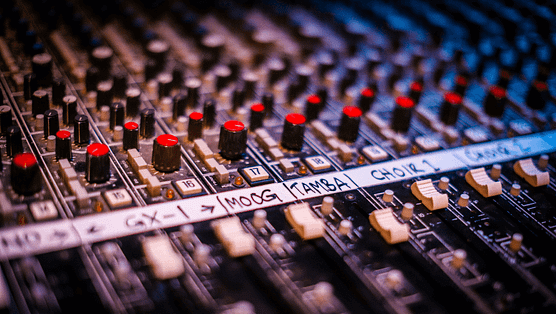
In previous articles, we have explored several ways to approach panning, but there is one technique that has gained popularity for its simplicity and effectiveness. We are talking about the LCR panning technique. LCR stands for Left, Center, and Right, and this method involves placing audio elements exclusively in these three positions.
In this article, we’ll delve into the intricacies of LCR panning, and explore its benefits, challenges, and practical applications in the world of mixing.
Understanding LCR Panning
The LCR panning technique simplifies the spatial positioning of audio elements within a mix. Unlike traditional panning, which allows for any degree of positioning between the left and right channels, LCR restricts placement to only three positions: left, centre and right. While anything panned left or right will play entirely in the left or right channel, the elements panned centre will play equally through both left and right channels.
The simplicity of LCR panning streamlines the mixing process and provides a clear and focused soundstage. You can quickly decide where each element sits in the stereo field, reducing the time spent on intricate panning adjustments. Also, by restricting placement to three positions, each component has its designated space, minimising phase issues and enhancing the clarity of individual tracks.
Back in the day of analogue mixing, LCR panning helped mixing engineers ensure the recallability of their sessions since this technique ensured the correct position of each pan knob of the console every time. On top of that, the LCR panning helps the mix translate well to mono-playback systems. Since crucial elements of the mix would be placed in the centre, they will remain prominent and unaffected when the stereo mix is collapsed to mono.
The downside
On the other hand, LCR panning can result in a lack of nuance and subtlety in spatial positioning. The absence of gradual panning movements may limit the depth and width of the mix and may only suit some genres or projects, particularly those that demand intricate stereo imaging.
When To use it
LCR panning is widely embraced in rock and pop, creating punchy and well-defined mixes. Spoken-word projects or broadcasts can also benefit from this technique. Placing the speaker in the centre enhances clarity and ensures that the voice remains prominent while simplifying the placement of effects and music.
The LCR panning technique offers a straightforward and practical approach to spatial positioning in mixing. While it may not be suitable for every project, its clarity, mono compatibility, and efficiency benefits make it a valuable tool in the audio engineer’s arsenal. Starting your mix experimenting with LCR panning can open new creative possibilities and contribute to developing a unique sonic signature in your mixes.
Did you know about LCR panning? Do you use it in your mixes?
Let us know in the comments below and remember to subscribe to our newsletter to receive more mixing tips and all the news about Sonimus products.








Leave A Comment
You must be logged in to post a comment.